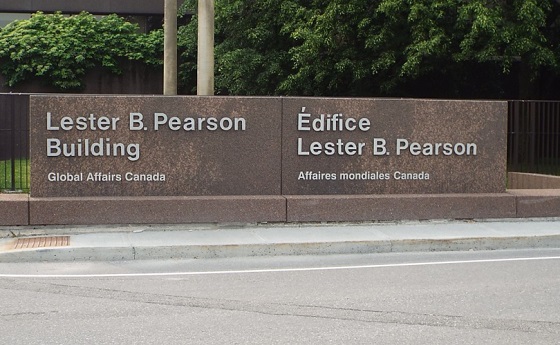Uncategorized
Deep freeze envelops Midwest, even stops the mail

BISMARCK, N.D. — A deadly arctic deep freeze enveloped the Midwest with record-breaking temperatures Wednesday, triggering widespread closures of schools and businesses, and prompting the U.S. Postal Service to take the rare step of suspending mail delivery to a wide swath of the region.
Many normal activities shut down and residents huddled inside as the National Weather Service forecast plunging temperatures from one of the coldest air masses in years.
Officials throughout the region were focused on protecting vulnerable people from the cold , including the homeless, seniors and those living in substandard housing. Some buses were turned into mobile warming shelters to help the homeless in Chicago, where temperatures plunged to minus 19 degrees (negative 28 degrees Celsius) early Wednesday, breaking the previous record low for the day set in 1966.
The bitter cold is the result of a split in the polar vortex that allowed temperatures to plunge much further south than normal.
Governors in Illinois, Wisconsin and Michigan declared emergencies as the worst of the cold threatened on Wednesday. In Chicago, major attractions closed because of the bitter cold, including the Lincoln Park Zoo, the Art Institute and the Field Museum.
“These (conditions) are actually a public health risk and you need to treat it appropriately,” Chicago Mayor Rahm Emanuel said Tuesday. “They are life-threatening conditions and temperatures.”
A wind chill of minus 25 (negative 32 degrees Celsius) can freeze skin within 15 minutes, according to the National Weather Service.
In Michigan, homeless shelters in Lansing were becoming “overloaded,” Mayor Andy Schor said. They also were filling up in Detroit.
“People don’t want to be out there right now,” said Brennan Ellis, 53, who is staying at the Detroit Rescue Mission Ministries.
Detroit’s outlook was for Wednesday overnight lows around minus 12 (negative 24 degrees Celsius), with wind chills dropping to minus 35 (negative 37 degrees Celsius).
At least four deaths were linked to the weather system Tuesday, including a man struck and killed by a snow plow in the Chicago area, a young couple whose SUV struck another on a snowy road in northern Indiana and a Milwaukee man found frozen to death in a garage.
A popular saying goes: “Neither snow nor rain nor heat …” will stop the mail from being delivered. But extreme cold will on Wednesday.
The U.S. Postal Service said it would suspend mail delivery on Wednesday in parts or all of several Midwest states including North Dakota, South Dakota, Nebraska, Kansas, Minnesota, Wisconsin, Iowa, Illinois, Indiana and Michigan.
Hawaii native Charles Henry, 54, was staying at a shelter in St. Paul, Minnesota, and said he was grateful to have a place to stay out of the cold.
“That wind chill out there is not even a joke,” he said. “I feel sorry for anybody that has to stay outside.”
Chicago was turning five buses into makeshift warming
“We’re bringing the warming shelters to them, so they can stay near all of their stuff and still warm up,” said Cristina Villarreal, spokeswoman for the city’s Department of Family and Support Services.
Shelters, churches and city departments in Detroit worked together to help get vulnerable people out of the cold, offering the message to those who refused help that “you’re going to freeze or lose a limb,” said Terra DeFoe, a senior adviser to Detroit Mayor Mike Duggan.
Hundreds of public schools and several large universities from North Dakota to Pennsylvania
American Indian tribes in the Upper Midwest were doing what they could to help members in need with heating supplies. The extreme cold was “a scary situation,” because much of the housing is of poor quality, said Chris Fairbanks, energy assistance program manager for the White Earth Band of Ojibwe in Minnesota.
The cold weather was even affecting beer deliveries, with a pair of western Wisconsin distributors saying they would delay or suspend shipments for fear that beer would freeze in their trucks.
But it wasn’t stopping one of America’s most formidable endurance tests, however — the three-day Arrowhead 135 was going on as scheduled in northeastern Minnesota. Competitors can cover the race route by bicycle, cross-country skis or just running.
The cold is attributed to a sudden warming far above the North Pole. A blast of warm air from misplaced Moroccan heat last month made the normally super chilly air temperatures above the North Pole rapidly increase. That split the polar vortex into pieces, which then started to wander, said Judah Cohen, a winter storm expert for Atmospheric Environmental Research.
One of those polar vortex pieces is responsible for the subzero temperatures across the Midwest this week.
___
Associated Press reporters Caryn Rousseau and Don Babwin in Chicago; Corey Williams, David Runk and Mike Householder in Detroit; David Eggert in Lansing, Michigan; and Jeff Baenen in Minneapolis contributed to this report. AP Science Writer Seth Borenstein also contributed.
Blake Nicholson, The Associated Press
Uncategorized
Trump Admin Establishing Council To Make Buildings Beautiful Again
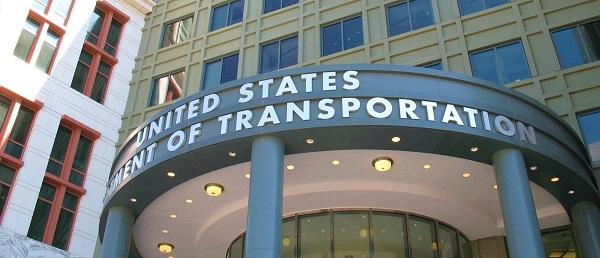

From the Daily Caller News Foundation
By Jason Hopkins
The Trump administration is creating a first-of-its-kind task force aimed at ushering in a new “Golden Age” of beautiful infrastructure across the U.S.
The Department of Transportation (DOT) will announce the establishment of the Beautifying Transportation Infrastructure Council (BTIC) on Thursday, the Daily Caller News Foundation exclusively learned. The BTIC seeks to advise Transportation Secretary Sean Duffy on design and policy ideas for key infrastructure projects, including highways, bridges and transit hubs.
“What happened to our country’s proud tradition of building great, big, beautiful things?” Duffy said in a statement shared with the DCNF. “It’s time the design for America’s latest infrastructure projects reflects our nation’s strength, pride, and promise.”
“We’re engaging the best and brightest minds in architectural design and engineering to make beautiful structures that move you and bring about a new Golden Age of Transportation,” Duffy continued.
Mini scoop – here is the DOT’s rollout of its Beautifying Transportation Infrastructure Council, which will be tasked with making our buildings beautiful again. pic.twitter.com/
9iV2xSxdJM — Jason Hopkins (@jasonhopkinsdc) October 23, 2025
The DOT is encouraging nominations of the country’s best architects, urban planners, artists and others to serve on the council, according to the department. While ensuring that efficiency and safety remain a top priority, the BTIC will provide guidance on projects that “enhance” public areas and develop aesthetic performance metrics.
The new council aligns with an executive order signed by President Donald Trump in August 2025 regarding infrastructure. The “Making Federal Architecture Beautiful Again” order calls for federal public buildings in the country to “respect regional architectural heritage” and aims to prevent federal construction projects from using modernist and brutalist architecture styles, instead returning to a classical style.
“The Founders, in line with great societies before them, attached great importance to Federal civic architecture,” Trump’s order stated. “They wanted America’s public buildings to inspire the American people and encourage civic virtue.”
“President George Washington and Secretary of State Thomas Jefferson consciously modeled the most important buildings in Washington, D.C., on the classical architecture of ancient Athens and Rome,” the order continued. “Because of their proven ability to meet these requirements, classical and traditional architecture are preferred modes of architectural design.”
The DOT invested millions in major infrastructure projects since Trump’s return to the White House. Duffy announced in August a $43 million transformation initiative of the New York Penn Station in New York City and in September unveiledmajor progress in the rehabilitation and modernization of Washington Union Station in Washington, D.C.
The BTIC will comprise up to 11 members who will serve two-year terms, with the chance to be reappointed, according to the DOT. The task force will meet biannually. The deadline for nominations will end Nov. 21.
Uncategorized
New report warns WHO health rules erode Canada’s democracy and Charter rights

The Justice Centre for Constitutional Freedoms has released a new report titled Canada’s Surrender of Sovereignty: New WHO health regulations undermine Canadian democracy and Charter freedoms. Authored by Nigel Hannaford, a veteran journalist and researcher, the report warns that Canada’s acceptance of the World Health Organization’s (WHO) revised International Health Regulations (IHR) represents a serious erosion of national independence and democratic accountability.
The IHR amendments, which took effect on September 19, 2025, authorize the WHO Director-General to declare global “health emergencies” that could require Canada to follow directives from bureaucrats in Geneva, bypassing the House of Commons and the will of Canadian voters.
The WHO regards these regulations as “binding,” despite having no ability or legal authority to impose such regulations. Even so, Canada is opting to accept the regulations as binding.
By accepting the WHO’s revised IHR, the report explains, Canada has relinquished its own control over future health crises and instead has agreed to let the WHO determine when a “pandemic emergency” exists and what Canada must do to respond to it, after which Canada must report back to the WHO.
In fact, under these International Health Regulations, the WHO could demand countries like Canada impose stringent freedom-violating health policies, such as lockdowns, vaccine mandates, or travel restrictions without debate, evidence review, or public accountability, the report explains.
Once the WHO declares a “Pandemic Emergency,” member states are obligated to implement such emergency measures “without delay” for a minimum of three months.
Importantly, following these WHO directives would undermine government accountability as politicians may hide behind international “commitments” to justify their actions as “simply following international rules,” the report warns.
Canada should instead withdraw from the revised IHR, following the example of countries like Germany, Austria, Italy, Czech Republic, and the United States. The report recommends continued international cooperation without surrendering control over domestic health policies.
Constitutional lawyer Allison Pejovic said, “[b]y treating WHO edicts as binding, the federal government has effectively placed Canadian sovereignty on loan to an unelected international body.”
“Such directives, if enforced, would likely violate Canadians’ Charter rights and freedoms,” she added.
Mr. Hannaford agreed, saying, “Canada’s health policies must be made in Canada. No free and democratic nation should outsource its emergency powers to unelected bureaucrats in Geneva.”
The Justice Centre urges Canadians to contact their Members of Parliament and demand they support withdrawing from the revised IHR to restore Canadian sovereignty and reject blind compliance with WHO directives.
-
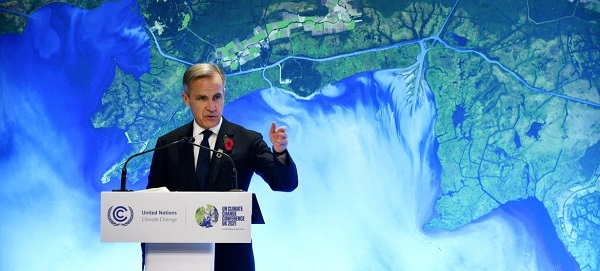
 Alberta2 days ago
Alberta2 days agoFederal budget: It’s not easy being green
-

 Health20 hours ago
Health20 hours agoLack of adequate health care pushing Canadians toward assisted suicide
-

 Business2 days ago
Business2 days agoWill Paramount turn the tide of legacy media and entertainment?
-
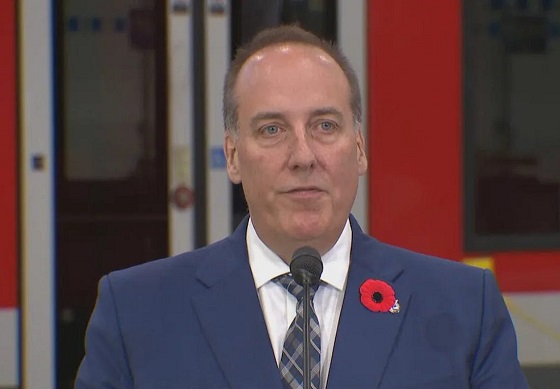
 National12 hours ago
National12 hours agoWatchdog Demands Answers as MP Chris d’Entremont Crosses Floor
-
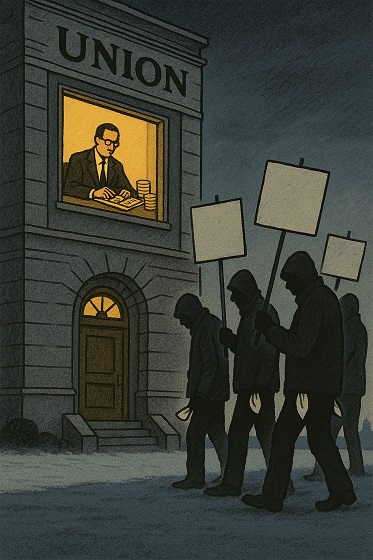
 Alberta12 hours ago
Alberta12 hours agoATA Collect $72 Million in Dues But Couldn’t Pay Striking Teachers a Dime
-

 Energy2 days ago
Energy2 days agoA picture is worth a thousand spreadsheets
-

 Energy1 day ago
Energy1 day agoIt should not take a crisis for Canada to develop the resources that make people and communities thrive.
-
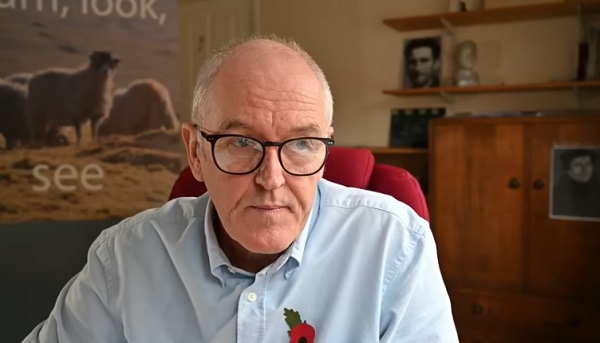
 Dr John Campbell1 day ago
Dr John Campbell1 day agoCures for Cancer? A new study shows incredible results from cheap generic drug Fenbendazole






